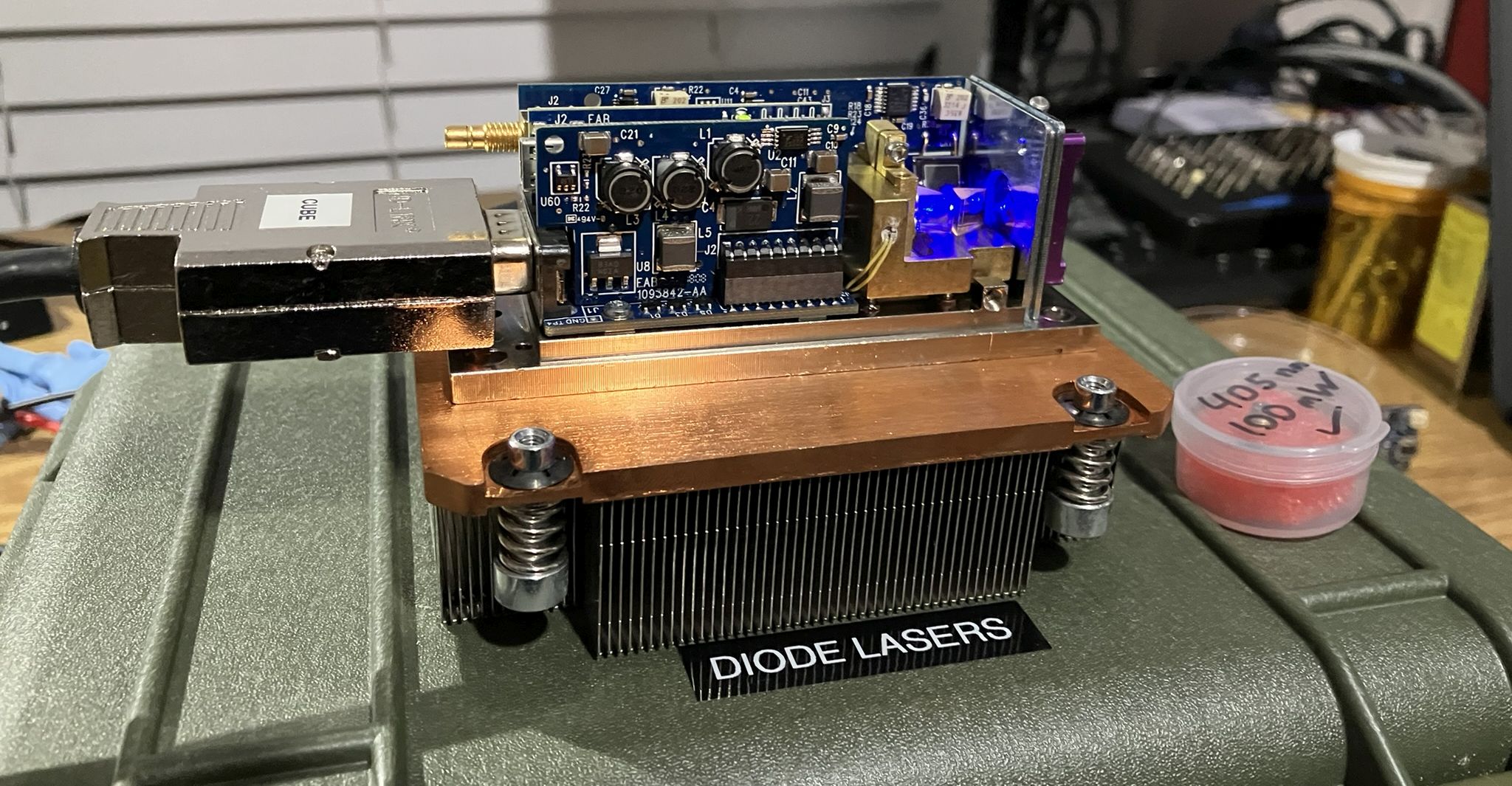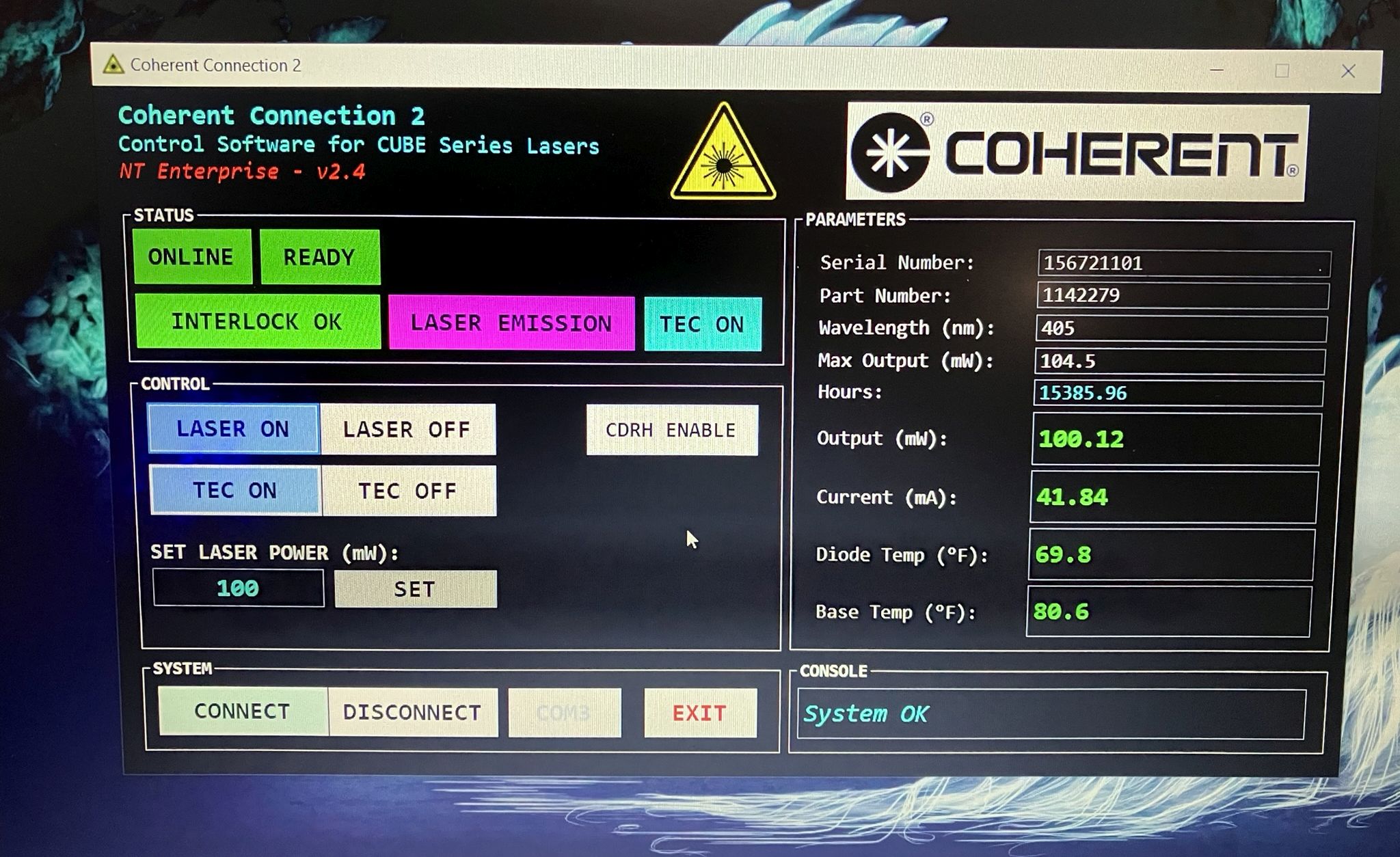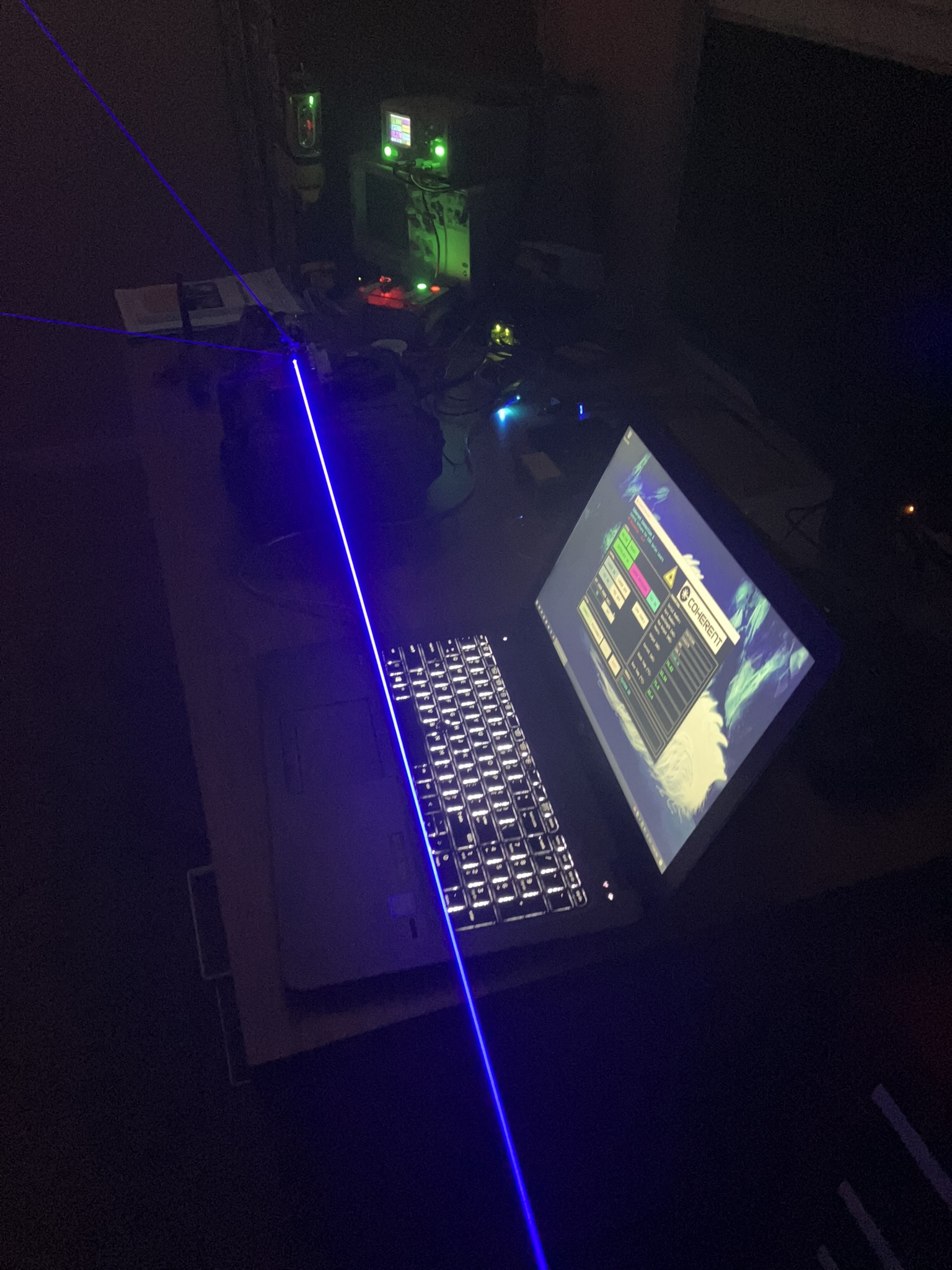This laser started off as a typical Coherent CUBE series diode laser no different than the others that we have previously worked with. At this point, we have become very familiar with the Coherent CUBE laser series, including how they are assembled, how they work, and how they are repaired. Previously, we gutted all the electronics and used only the CUBE chassis to build a custom laser, or we replaced dead laser diodes in otherwise functional CUBE lasers with ones of identical power and wavelength. This unit ended up being a bit different than the rest. It arrived fully functional, but we removed and replaced the original 404 nm laser diode with a 450 nm diode. All of the original control electronics and thermal control systems were left unchanged. The 404 nm diode make and model is unknown and the 450 nm diode is an Osram PLT5 450B. We chose this particular diode as the power and current requirements were quite similar to the existing diode and closely matched the controller's programming. This was important as we have not yet been able to reprogram the internal controller of the CUBE laser, this is something we are currently working on.

This was really no different than the diode replacements we have performed on other CUBE lasers, except the replacement diode wavelength was different than the original. It ended up working quite well. The laser is extremely bright and runs well using the existing electronics. This is beneficial as we are still able to control the laser through the RS-232 serial interface. The laser can be powered on and off, modulated, and the output power can be adjusted. We can also monitor the diode current and system temperature. However, it is important to point out that this system is no longer in calibration with respect to output power measurement. Since the wavelength of the laser diode does not match the calibrated wavelength and the controller's configured wavelength, the output power measurement is no longer accurate. Despite this, we can still use the reading to get an approximate idea of power output.

The output power to diode current ratio is a bit unusual for this unit. This is likely due to one of two things. First being the uncalibrated nature of the output power measurement which could be indicating that the laser is outputting more power than it actually is. The other possibility is that this laser diode is extremely healthy and requires a very low current to product a strong output. This would make sense as the diode was purchased brand new. We will not be able to fully answer this question until we obtain a reliable external laser power meter. The stray beams being emitted from prisms are only visible because the metal cover has been removed.

Special thanks to Zenodilodon for providing recommendations for replacement laser diodes!